Importance of Sitting Balance For Patients With SMA
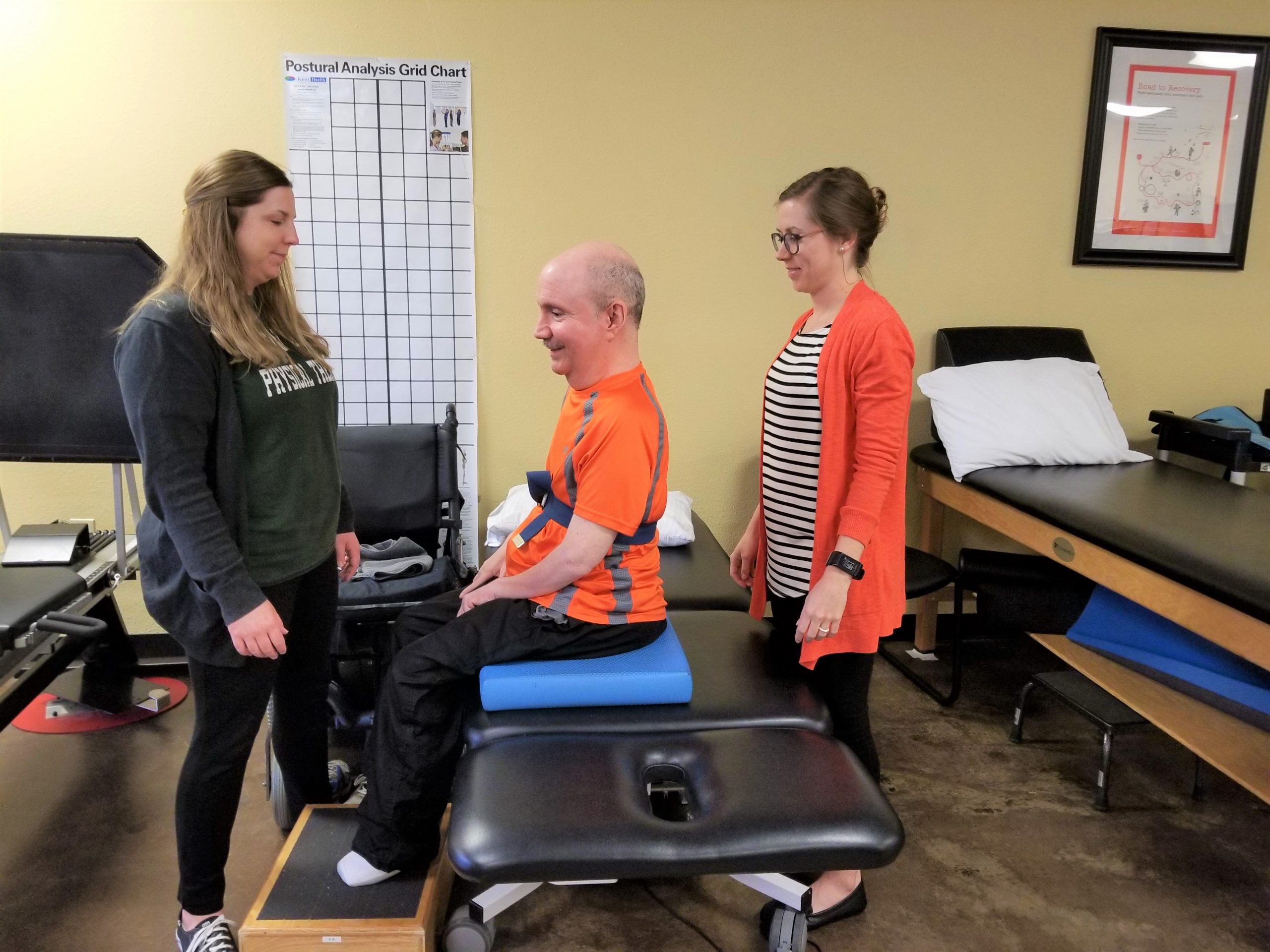
In physical therapy, one main focus for us is to ensure patients improve on their balance, especially if the reason for their visit is secondary to an injury from a fall. With patients that spend the majority of their time in a wheelchair, we still want to focus a lot on balance, but it is sitting balance as opposed to standing balance, like we normally think of.
When Michael, our patient with SMA first started physical therapy, he was unable to descend a ramp from a sidewalk, or the ramp from his minivan, without someone standing beside him with a hand on his chest to ensure he didn’t fall forward out of his chair. This fear and decreased balance secondary to decreased core strength, led to a large decrease in his independence. We began to brainstorm on ways to improve his core strength, and to improve his balance and his confidence while negotiating different surfaces and slopes.
One way we worked to improve this was to have Michael sit on a therapy table without back support, but we did give him foot support using a box. With one person standing in front and behind him, we let him get centered and gain his balance. Once he was comfortable with this, over the next several months. we began to challenge him more by adding external perturbations to imitate hitting a rock or negotiating through an uneven surface, and challenged him to regain his sitting balance after being knocked out of his center of gravity. Once this became less challenging, we had Michael sit on an uneven surface and performed the same exercises.
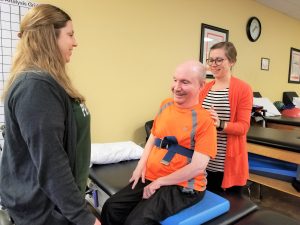
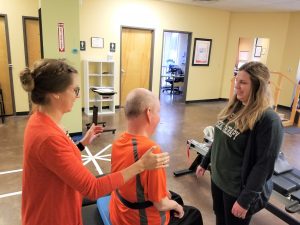
Another way that we’ve progressed with these sitting balance exercises, is to take a towel and rolling it up, and placing it under the foam cushion he’s sitting on, either on the left, right, front, or back. This forces him to lean to the other side, mimicking driving on a slope, ramp or other uneven surfaces. In this position, he must regain his balance and move from left to right or front to back, to improve his confidence and strength in this position. We also work on holding an isometric contraction in this leaning position, to ensure his safety and core strength while sitting in these various positions, to ensure his control while on an uneven surface.
Another place Michael spends some time is in his bed, and we’ve talked about improving independence with bed mobility, but it is also helpful for Michael to be able to long sit in his bed and sit with his legs crossed while in bed. These are comfortable positions for Michael, and he would like to be able to sit in these positions with improved independence, and to be able to have different positions to help decrease pressure on bony prominences. This also helps him to comply with his stretching home exercise program with more independence. He’s also able to stretch out his hamstrings and hips in these positions.
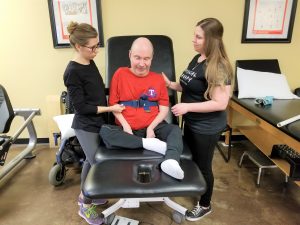
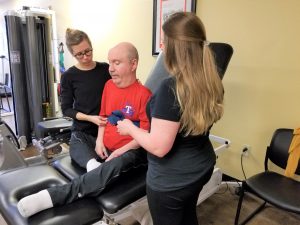
The first hurdle in getting into these positions was flexibility in his lower extremities. Once he became flexible enough to attempt these positions, we started in a reclined position on the therapy table to decrease the tension on his hips. Once this was comfortable, we moved him into an upright position with back support of the table, with a gait belt around his chest, and a person on either side of him. We are now working on reclining the back support and having him work to sit with his legs in a long sit position, and legs crossed while having his upper body unsupported. We now have a goal of sitting unsupported in long sit and leg crossed positions for equal to or greater than thirty seconds, to increase his independence with his home exercise program, as well as pressure relief in bed.
Once we reach these goals, we will work on active range of motion of his torso, to be able to move, lean side to side, and reposition, as well as pressure relief while in these positions. This will continue to increase his independence and health, while being able to pressure relief and decrease the chance of pressure ulcers.
======================== Patient Perspective ========================
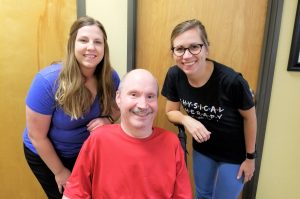
When I first started physical therapy, in October 2017, my goals were simple. The only thing that I wanted was to gain a little bit more strength in my arms and maybe some core strength, so that I could be more comfortable sitting in my wheelchair, and possibly becoming more independent. Little did I know that my physical therapists were thinking two moves ahead of me. Physical therapists need to think like chess players, a couple of moves ahead of the one that they are currently working on. For me, their knowledge proved that I had found the right people to help me in achieving my goals.
After working on my core strengthening for nearly 8 months, Emily and Laura told me that they were going to transfer me from my wheelchair to the therapy table, and they were going to do this to help me with my sitting balance. While I looked at both of them and told them that my balance was fine, little did I know that having to sit unassisted, without anything supporting my back or sides, was going to become a challenge that would prove to be both exhausting and exciting. (Not to mention exhilarating)
When I first started these balance exercises, I felt like an infant. Having two physical therapist hovering around me with their hands inches away from me, in case I lost my balance, was somewhat embarrassing. The looks on their faces when I started keeping my balance, and them clapping for me, I know that my face turned 15 different shades of red. As you can tell by the picture below, all of us were excited.

Now that I’ve been working on these balance exercises for nearly a year, I can attest to the fact that my core strength was crucial in the success that I’m achieving. My balance is exponentially better, and my confidence level while sitting in my wheelchair has given me the mindset that I can do much more than what I used to be able to do. Having a strong core, and having the ability to control my balance, gives me the confidence to push myself even further, and while I may fail from time to time, I do sit up in my wheelchair like a big boy. (Insert laughter here)

